Another Sundance has come and gone, with all of its celebrity red carpet appearances, sold-out screenings, corporate gifting suites, secret concerts and—oh, yeah—a movie or two as well. This year we saw a number of compelling characters, from cartel fighters to loser gamblers to Jesus Christ himself (who looked a lot like Obi-Wan Kenobi), but none more compelling than a brilliant sensitive soul who spoke to us from beyond the grave. Who would have guessed that your first Oscar contender of 2015 would be Jason Segel? Not us. But there he is.
Here are our ten favorite films from Sundance 2015.
10. Welcome to Leith
Directors: Michael Beach Nichols, Christopher K. Walker
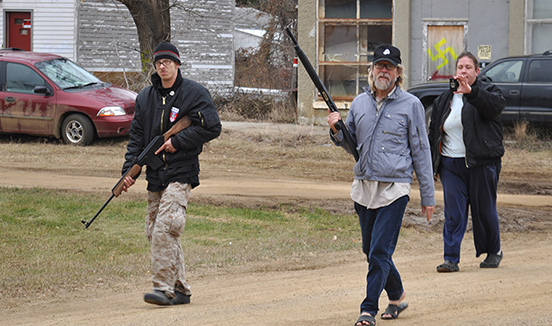
This documentary begins with a nightmare scenario, then forces us to carefully consider the path the nightmare must travel. The tiny town of Leith, ND, population 24, enters turmoil when white supremacist Craig Cobb decides to buy land there and turn it into a haven for white power groups. The townspeople naturally react with anger, knowing that the hate groups could easily obtain a voting majority due to Leith’s rather meager population, and are further antagonized by Cobb, who seems to revel in aggravating them. Things come to a head when Cobb and his companion, shotguns at the ready, walk through town “on patrol,” hoping to provoke a reaction.
With intimate access to parties on both sides of the battle, directors Michael Beach Nichols and Christopher K. Walker constantly challenge our initial impressions and feelings. The townspeople’s fight against the hate groups has shades of anti-immigrant activities, as they try to drive the outsiders away. And yet, when you remember that they’re fighting against Nazis who want to take over their town, it’s hard to argue that they should be more relaxed. Welcome to Leith never offers explicit instructions on how to think, it just quietly observes, leaving the audience to grapple with bigger, more complex questions about assumed belief and deep-seated prejudice. —Jeremy Mathews
9. Last Days in the Desert
Director: Rodrigo García

There have been many attempts to humanize Jesus in film, but in Rodrigo García’s arresting Last Days in the Desert, Ewan McGregor manages to bring both humanity and deity to Christ. There are only five characters in this gorgeously shot imagining of Jesus’ time in the wilderness, meaning a tremendous amount of the film’s burden lies on the McGregor’s shoulders, but thankfully he’s up to the task as both Jesus and Jesus’s foil, the tempting Devil. It’s a quiet, contemplative movie—Jesus looks for purpose and clarity among the messiness of humanity and all its shortcomings—a rare religious film that is relatively faithful to its traditions but more questioning than dogmatic. —Josh Jackson
8. Sleeping With Other People
Director: Leslye Headland
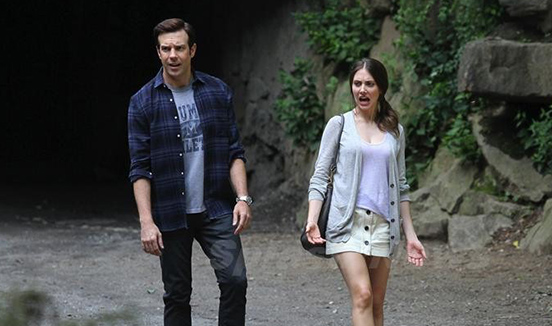
The romantic comedy is a genre crying out for an update. We’ve had a few worthy entries in the 21st century—the imaginative Amelie, the clever and quirky Silver Linings Playbook, even the irreverent Knocked Up. But none of those films embraced the genre and all its tropes quite like the latest from Leslye Headland does. With her third film, which is little more than 90 minutes of sexual tension building between two friends, Headland has managed to create a direct descendent of Frank Capra, Billy Wilder, Rob Reiner and Nora Ephron—and make it just as uproariously funny as its forebears’ best works. Sleeping With Other People pushes at every boundary without ever feeling unnecessarily tawdry; it’s the Cards Against Humanity version of When Harry Met Sally (there’s even an “I’ll have what she’s having” moment involving a bottle of tea). Alison Brie could be our decade’s Meg Ryan, and Sudekis could be our Hanks—but there’s no doubt that Leslye Headland will keep making us laugh for years to come. —Josh Jackson
7. Me and Earl and the Dying Girl
Director: Alfonso Gomez-Rejon
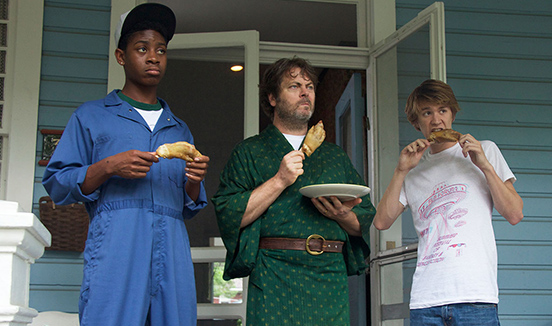
Each year, the Sundance crowd favorite either inspires a lot of laughs or packs a big emotional punch. This year it did both, picking up the U.S. Dramatic Grand Jury Prize and Audience Award in the process. In Me and Earl and the Dying Girl, Thomas Mann stars as Greg, an awkward high school student who befriends Rachel (Olivia Cooke), his classmate dying of cancer. Though he and his friend Earl became Werner Herzog-loving cinephiles at a young age, spending their formative years making childish parody-homages (Senior Citizen Kane) to the art they adore, when Greg is forced to confront some deep emotions, to express something truly personal, he has no idea where to start.
The film runs the risk of depending too readily on a garish barrage of indie quirk, but its characters and performances are so rich and likable, and Alfonso Gomez-Rejon’s direction so energetic, one has little option to do anything with it but to fall in love. —Jeremy Mathews
6. James White
Director: Josh Mond

As intuitively as James White captures its title character’s rage, aimlessness and confusion, writer/director Josh Mond ’s true achievement is in his ability to afford multiple dimensions to characters who only have one or two scenes. Christopher Abbott (Girls, Martha Marcy Mary Marlene) confirms his talent in a big way, playing James, a quickly aging New Yorker still lost in a world of clubbing, casual sex and even more casual drug use. He finally begins to find purpose in caring for his sick mother (Cynthia Nixon—also great) as she suffers with cancer; one scene in particular, in which James helps his mother to the bathroom, then tries to comfort her as best he can, is a perfect encapsulation of the movie’s strength, and already feels like one of the most powerful cinematic moments of 2015. —Jeremy Mathews
5. The Nightmare
Director: Rodney Ascher

Proudly proving that Room 237 was no fluke, documentary filmmaker Rodney Ascher returned to Sundance with this gripping portrait of sleep paralysis, a strange condition in which the sufferer is neither asleep nor awake, tormented by visions but unable to move. Much like Room 237, which listened in while conspiracy theorists explained the “real” motivations behind Stanley Kubrick’s The Shining, The Nightmare begins with a clever hook but soon dives deep into its subjects, showcasing a cross-section of humanity whose bedtime hours have become a perpetual terror. In a way similar to Errol Morris, Ascher is fascinated by seemingly ordinary people: how they tick, how they cope, how they make sense of their lives. Incorporating recreated scenes of his subjects’ dark dreams, Ascher makes life itself seem strange, vivid and powerfully intense. —Tim Grierson
4. Cartel Land
Director: Matthew Heineman

Twenty minutes into Cartel Land, I leaned over to my filmmaker friend and whispered, “We have GOT to get the rights to turn this into a scripted feature.” Half an hour after that, I leaned over again and whispered, “Never mind.” She nodded, knowing exactly what I meant—a scripted feature would be superfluous after the incredible storytelling already present here, plus we’d never be able to find actors as compelling as these real life figures. Cartel Land is incredibly gripping from the very first scene, in which director Matthew Heineman interviews cartel members as they are cooking meth under cover of darkness. Believe it or not, the tension actually escalates from there: Heineman begins to follow two vigilante groups—one in Arizona, one in the south of Mexico—who are fighting a grassroots war against the cartels. The results are astounding. Cartel Land is staggering, stunning. The best documentary I’ve seen in a very long time. —Michael Dunaway
3. The Witch
Director: Robert Eggers
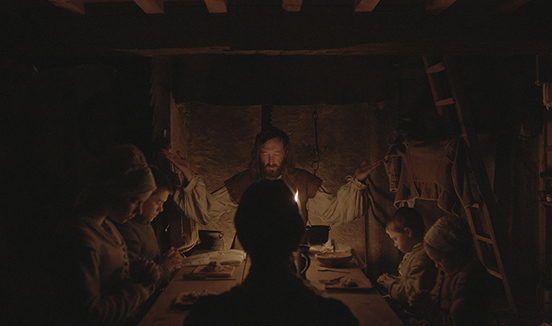
Writer-director Robert Eggers’ Sundance hit is built around a simple but powerful concept: There’s something ominous out there in the woods. The Witch plays on all the elegant fears of our childhood—dark and spooky forests, demonic possession, those invisible terrors that are infinitely scarier than some dude with a meat cleaver—for a tale of a 17th century New England family living in a house in the middle of nowhere. On its most basic level, the film is a story of good and evil, but it’s also a petri-dish examination of how close-knit communities unravel once distrust enters the equation. Ralph Ineson plays the hardheaded patriarch, a devoutly religious man blind to his own shortcomings, but it’s Anya Taylor-Joy who’s the breakout star as his oldest daughter. She knows that a witch is responsible for the slow-motion terror descending upon her family, but first she has to save her brood from themselves. —Tim Grierson
2. Mississippi Grind
Directors: Ryan Fleck, Anna Boden
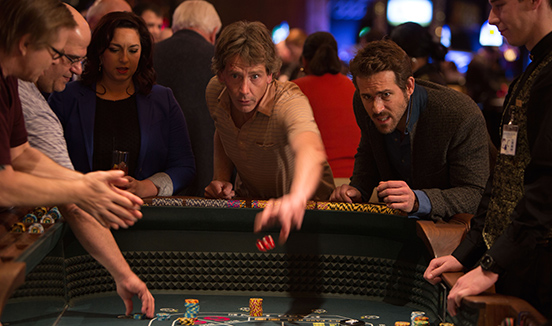
At once an offbeat buddy flick and an homage to road movies of the 1970s, Mississippi Grind manages to wring an enormous amount of pathos from its good-time vibe and playful plotting. Ryan Reynolds is snugly cast as Curtis, a young, fast-talking, even-faster-smiling gambler who is seemingly bothered by absolutely nothing, ready with an anecdote for every situation. For his part, Ben Mendelsohn is just plain perfect as Gerry, the long-time, down-on-his-luck gambler whom Curtis befriends suspiciously quickly. When Gerry comes up with a harebrained scheme for the two to gamble their way down the Mississippi River toward a high-stakes game in New Orleans, you think you know where it’s all headed. But there are a good many surprises for both the characters and us along the way. And even if the story doesn’t grab you (which is unlikely), it’s worth the price of admission to see every emotion flicker across Mendelsohn’s magnificent hangdog face. His is the standout performance from the entire fest. —Michael Dunaway
1. The End of the Tour
Director: James Ponsoldt

The latest from director James Ponsoldt (The Spectacular Now, Smashed) is about journalist/author David Lipsky as much as it is the late author David Foster Wallace. Adapted from Lipsky’s book about his sometimes-confrontational interview with Wallace just after the publication of Infinite Jest, The End of the Tour raises some of life’s most difficult questions about identity, the perception of others and intellectual honesty. But Jason Segel’s performance as the earnest Midwesterner Wallace is the grounding heart of the film. Wallace’s eventual suicide is a specter haunting the entire affair, but it’s never maudlin or manipulative. Instead, these few days in the passenger seat are welcome, listening to an original man’s original perspective on life and loneliness. —Josh Jackson